Best Practices to Avoid Cybersecurity Risks
Maintaining cybersecurity while working from home is challenging but necessary.
Do you have a remotely working development team? It can be frightening to consider all of the sensitive data that is left vulnerable due to distributed teams.
Fortunately, best practices for security are not hidden. You simply need to know where to look for the information.
Nile Bits has the details right here! Stay tuned for more information on cybersecurity procedures for work-from-home teams.
What Is Cybersecurity?
Cybersecurity refers to any measures and protocols that safeguard a machine’s digital well-being.
In practice, cybersecurity may entail using a variety of applications, programs, systems, networks, and other tools to reduce vulnerabilities and respond to cyber threats.
Unauthorized access is one of the most serious threats to secure networks and devices. Information privacy is critical for any business that relies on technical infrastructure.
Cybersecurity encompasses everything related to the protection of these entities.
Why Is Cybersecurity Important?
Cybersecurity, also known as information technology (IT) security or electronic information security, is as concerned with those who use computers as it is with the computers themselves.
Though poor cybersecurity can jeopardies your personal data, the stakes are just as high for businesses and government agencies facing cyber threats.
Much of the world’s information is stored digitally, and leaving this data vulnerable puts nearly everyone in danger.
Unfortunately, protecting machines and people is a difficult task. Even as technology advances, so do the cyber threats that jeopardies cybersecurity.
The number of data breaches nearly doubled between 2018 and 2019. Such attacks primarily target the medical, financial, and retail sectors.
Of course, cyber threats have a significant impact on businesses. Aside from data loss, a data breach can cause consumers to lose trust in a company, harming the company’s reputation.
Not to mention, the average cost of a data breach in 2020 was $3.86 million USD.
And it goes without saying that cybercriminals who gain access to government institutions’ confidential information can almost single-handedly disrupt business as usual on a large scale — for better or worse.
To summaries, ignoring the importance of cybersecurity can have a negative social, economic, and even political impact.
Types of Cybersecurity Threats
In general, there are three main types of cybersecurity threats:
- cybercrime — occurs when an individual or group targets a system for the purpose of disruption or financial gain
- cyber-attack — involves the gathering of information that is politically motivated
- cyberterrorism — when the undermining of information systems has the intent to spread fear
As you can see, cybersecurity threats are largely classified based on their goal. However, there are several technical descriptors for how a cyber threat operates within these three broad categories. See the list below.
Malware
Malware refers to malicious software as a whole. Malware is typically created by cybercriminals and hackers with the intent of causing harm to another user’s computer.
Even within this category, there are various subsets of malware, such as:
- viruses — a self-replicating program that infects clean code with its replicants, modifying other programs
- trojans — malicious code disguised as legitimate software
- spyware — software that aims to collect information from a person or organization for malicious purposes
- ransomware — software designed to blackmail users by encrypting important files
- adware — software that automatically displays unwanted advertisements on a user’s interface
- botnets — a network of connected computers that can send spam, steal data, or compromise confidential information, among other things
SQL Injection
SQL injection is a type of attack that involves inserting malicious code into a structured query language (SQL) statement. It is one of the most common web hacking attacks and can cause database damage.
Phishing / Social Engineering
The act of manipulating users into disclosing private information is known as social engineering.
Phishing is a type of social engineering in which an attacker first sends a fraudulent message, usually via email, to entice a user to reveal sensitive information.
Man-in-the-Middle Attack
When a new connection is established, a perpetrator places themselves between the user and the web application. This is known as a man-in-the-middle (MITM) attack.
The man in the middle effectively disrupts a data transfer by inserting themselves into the process, posing as a participant and intercepting information.
Advanced Persistent Threats
Advanced persistent threats (APTs) are intruders or groups of intruders who can go undetected for a long time.
APTs infiltrate systems and leave them intact while stealing sensitive data. This is especially dangerous for government and state organizations.
Denial-of-Service Attack
In a denial-of-service attack, cybercriminals disrupt user requests by flooding networks and servers with traffic.
Because this method usually involves multiple coordinated systems, some refer to it as a distributed denial-of-service (DDoS) attack.
Key Elements of Cybersecurity
Modern cybersecurity is a broad subject with many subfields. It can encompass everything from business infrastructure to mobile computing.
Here are the various layers of cybersecurity for a comprehensive and effective cybercrime defense strategy:
- Application security — involves processes that help protect applications both in and out of the cloud; security is built in during the design stage
- Information security — securing data from unauthorized access and the protocols involved in doing so such as the General Data Protection Regulation (GDPR)
- Critical infrastructure security — practices that protect computer systems, networks, and similar assets
- Cloud security — encrypting cloud data to support customer privacy and compliance standards along with business interests
- Network security — security measure for protecting computer networks, both wired and wireless
- Disaster recovery & business continuity — tools and procedures, mainly in the form of documentation, put in place to respond to unforeseen events like natural disasters, power outages, and similar circumstances
- Operational security — includes the logistical management of security protocols; related to decision-making
- End-user education — aims to educate users about common security threats in order to avoid them
5 Modern Cybersecurity Challenges to Watch Out For
Cybersecurity is stronger than it has ever been. However, this does not mean that modern technology is without security risks.
There are romance schemes, for example, in which cybercriminals take advantage of new partners who do not reside in the country.
Given the current popularity of online dating, these types of scams are especially simple to set up.
There are also organized groups of cybercriminals with malicious intent. In December 2019, such a group was involved in the Dridex malware attack, which compromised governments and businesses all over the world.
These are just a few examples of the various ways in which cyber threats manifest themselves.
Take a look at the top five cyber threats to be aware of.
1. Cyberattacks via Compromised IoT Devices
The twenty-first century has prompted the development of one-of-a-kind application development trends that are impressive beyond measure.
Even when it comes to shiny and new things, cyber threats exist. For example, the internet of things (IoT) refers to a type of device that is digitally connected via a network.
A smart refrigerator or a FitBit are two examples of IoT in everyday life. Of course, this type of technology has its own set of flaws.
When networks are insecure, hackers can easily target IoT devices and gain remote access and control. Google Home and Alexa are two of the most hackable smart hubs.
2. Cloud Security Risks with Data and Applications
Cloud computing is another thriving industry with a lot to offer. Cloud computing plays a significant role in daily business operations, whether it is through off-premise servers or a popular cloud app like Slack.
Unfortunately, there are a few concerning risks to consider when it comes to the cloud and cybersecurity, such as cloud misconfiguration, insecure APIs, and the exposure of sensitive data.
A cloud misconfiguration occurs when a company fails to configure cloud systems correctly. In a figurative sense, this opens the door to potential hackers.
Given the prevalence of cloud technology, this is not uncommon when software as a service (SaaS) providers update their applications on a regular basis.
Alternatively, app interoperability with SaaS applications frequently necessitates the use of APIs. APIs allow applications and services to communicate and share information with one another.
Furthermore, there is always the possibility of insider intrusion. Cloud-based businesses typically give employees broad access to millions of files. It’s easy to compromise a file without even realizing it, but someone with malicious intent could do even more harm.
3. Machine Learning and AI-Based Attacks
Machine learning (ML) and artificial intelligence (AI) are two closely related technological concepts that have encapsulated much of the digital transformation over the last decade or so.
Complex algorithms can train machines to think for themselves, absorb new data, and essentially mimic human abilities using ML and AI.
AI and machine learning have both positive and negative effects on cybersecurity. Although artificial intelligence can improve threat detection and vulnerability management, it does have some drawbacks.
For example, system manipulation is a common attack in which a hacker uses malicious inputs to cause the machine to make incorrect predictions.
Transfer learning attacks are equally dangerous. Because machine learning relies on pre-trained learning models for optimization, an attacker who obtains a model can then launch specific attacks against it.
4. Cryptocurrency and Blockchain Systems Cyberthreats
Cryptocurrency is a digital currency with far superior encryption capabilities than the average paper bill.
Because of cryptocurrency’s potential, many businesses and individuals have invested in various types of cryptocurrency in order to generate revenue as this relatively new financial system grows.
Blockchain is the most widely used type of cryptocurrency. It is a type of decentralised cryptocurrency in which each transaction is contained within a virtual block that cannot be changed.
Blockchain technology is used by Bitcoin, which is probably the most well-known term in this context. Blockchain technology is being used in a variety of industries, ranging from healthcare to education.
Of course, the reality of digital currency implies that cyber risks are on the horizon. To clarify, an eclipse attack is a type of cryptocurrency cyberattack in which an attacker infiltrates and takes over a network connection.
The hacker isolates a blockchain node and floods the network with false information in this attack.
A Sybil attack can also take place on a network level. Sybil attacks involve the attacker forging pseudonymous identities in order to wield significant power.
5. Adopting and Scaling DevOps
DevOps is an abbreviation for developer operations and refers to a set of practices and tools used in software development and information technology (IT) in general.
Many of the cybersecurity risks that the DevOps team faces are also cloud security risks. This is because modern DevOps tooling frequently relies on cloud solutions.
As a result, security misconfigurations continue to be a major concern. Similarly, migrating to serverless computing exposes sensitive data to data vulnerabilities.
The interconnectedness of DevOps is also concerning, and it shares the same risks as cloud computing.
Cybersecurity Risks While Working from Home
If your company works with sensitive data, has a large user database, or is involved in financial operations, you should pay special attention to security measures.
Working with distributed remote employee networks is more difficult than working with everyone in the same office. Work-from-home jobs pose cybersecurity risks due to unprotected home and public network access.
Another factor influencing data breaches is endpoint security. This includes updating operating systems and software, as well as employing anti-virus software and network firewalls.
According to the 2018 State of Endpoint Security Report, patching critical software and operating systems takes an average of 102 days, leaving sensitive data vulnerable.
But, more than anything, cyber threats thrive on ignorance. Many businesses do not educate their employees about cybersecurity in work-from-home settings. The result is frequently an uninformed approach or no approach at all.
10 Steps To Guarantee Work From Home Cyber Security
Being forewarned is being forearmed. Once you are aware that there are threats out there that can compromise cybersecurity when working from home, you can take steps to reduce risks.
You can’t completely eliminate the possibility of a cyberattack, but you can reduce the chances of it happening.
1. Raise Awareness
Begin with the obvious: Educate employees both on-site and off-site about cybersecurity best practices and procedures.
This could include holding regular security meetings to update your employees on new cybersecurity technologies and developments. Knowing this information will significantly reduce the impact of a cybersecurity attack.
2. Monitor Company-Issued Devices
While privacy and trust are important things to consider here, monitoring company-issued devices can help prevent cybersecurity issues at work from home stations. Remember these tips when working with digital internet-ready devices:
- Keep them up to date with anti-virus software
- Analyze the potential point of exposure to security threats
- Find out whether or not employees are honoring the security protocols imposed by the company.
3. Establish Company Security Protocols
Having a centralized strategy for dealing with security issues will ascertain that everyone is following protocol and not exposing sensitive information to cyber risks.
A policy of this sort may include:
- Case studies and examples
- Suggestions on how to respond if you suspect a cyber threat,
- The programs that the employees need to use to create strong passwords
- Whatever other tips you can offer
There should also be clear documentation for how to handle cybersecurity threats when they arise in work-from-home environments so workers can follow along whenever they are in need.
4. Use Cloud Applications
Using cloud service providers is one way to maintain a high level of cybersecurity while working remotely. To transfer sensitive information, cloud services employ data encryption technology.
Transactions will be even more secure now that blockchain is being used in cloud software, and your budget will be pleased.
5. Utilize VPNs
One of the best ways to maintain work-from-home cybersecurity is to use a virtual private network (VPN).
A VPN helps to increase the security of a web session, transferred data, financial transactions, and personal information regardless of where they are located.
Your employees can use a VPN to establish a private connection to your business network from a public internet connection. They will be able to maintain their online privacy and anonymity in this manner.
6. Be Prepared
Adversarial attacks manifest themselves as malicious security breaches. Proper password management is one method for enhancing cybersecurity in work-from-home settings.
This frequently necessitates the use of password-generating software so that your employees do not create passwords that are easy to guess. A password manager is the name given to this type of software.
7. Use Multi-Factor Authentication
Login credentials alone are not always sufficient to prevent cyber attacks. Multi-factor authentication requires users to provide more than one form of authentication in order to prove their identity.
There are several approaches to this. In addition to login credentials, some apps ask security questions. These typically ask questions about the user’s childhood or other personal information.
Text or email authentication is used by other apps. They send you a code to your phone or email address, which you enter along with your login information.
It should be noted that SMS codes are not always the best authentication factor. Even a stranger looking over your shoulder can jeopardies your information.
TOTP (time-based one-time passwords) can help to mitigate such risks. These passwords only work once and are only active for a limited time.
Biological authentication is another method. When an app uses physical data, such as a fingerprint or facial recognition, this is referred to as a biometric.
Using multi-factor authentication decreases the likelihood that an attacker can access your business network.
8. Limit Access
Everything revolves around trust. However, for the same reason, you should restrict employees’ access to sensitive business information. Giving more people access creates more opportunities for security breaches.
Allow employees access to only the apps and data they require. If and when the need arises, you can always grant someone more privileges. This is a much safer model than allowing everyone unrestricted access.
9. Turn On Firewalls
Firewalls are a computer system’s first line of defense. However, turning off firewalls while working can leave you and your employees vulnerable.
Make it a requirement that all developers have firewalls enabled on their work devices at all times. In fact, this may be the simplest way to ensure some level of work from home cybersecurity, even if it is minimal.
10. Encrypt Everything
There are a couple of methods for encrypting your data. The first method is via employee devices. When you require your employees to encrypt their devices, no one will be able to access the data on them if they are lost or stolen.
Second, you should encrypt backups of any software and hardware associated with your business. Whether your company manages an app, website, or hard drive, these things do fail or become infected with malware.
A data backup strategy should be part of your work-from-home cybersecurity plan. However, even backups are not always secure. To avoid a data breach, encrypt backups as well.
What To Do If a Breach Happens
When working with distributed teams, having security measures in place can help you avoid a data breach. However, breaches do occur, and when they do, you’ll need a response strategy.
Here are a few scenarios where you should plan for breaches when working from home:
- A developer loses a device.
- An unauthorized party accesses your infrastructure.
- A team member is ‘let go’ under unfriendly circumstances.
These scenarios can have a negative impact on your business, and it is your responsibility to respond appropriately.
Sometimes this means being prepared to disable user accounts, take a server offline, or completely shut down production.
In essence, you’ll want to do whatever it takes to contain the breach and ensure that no further information is compromised.
These procedures should be clearly documented in company policy.
Conclusion
Preventive and containment measures should give you a leg up on any security issues you face with your remote development team.
Some of these measures include:
- Raising awareness of security issues through documentation and meetings dedicated to the topic
- Using new and clever software like a VPN, cloud services, and/or multi-factor authentication to increase security
- Being prepared for common attacks, not only by preventing them but by having a plan in effect to respond to them
Hopefully, these guidelines will be advantageous in meeting that objective. Nile Bits is committed to helping you with your business needs.
While getting your software built is our main concern, we also care that your software is secure.
Contact us today to talk more about your project! We guarantee you that we can fulfill your needs — from work from home cybersecurity to completing your next software development project.


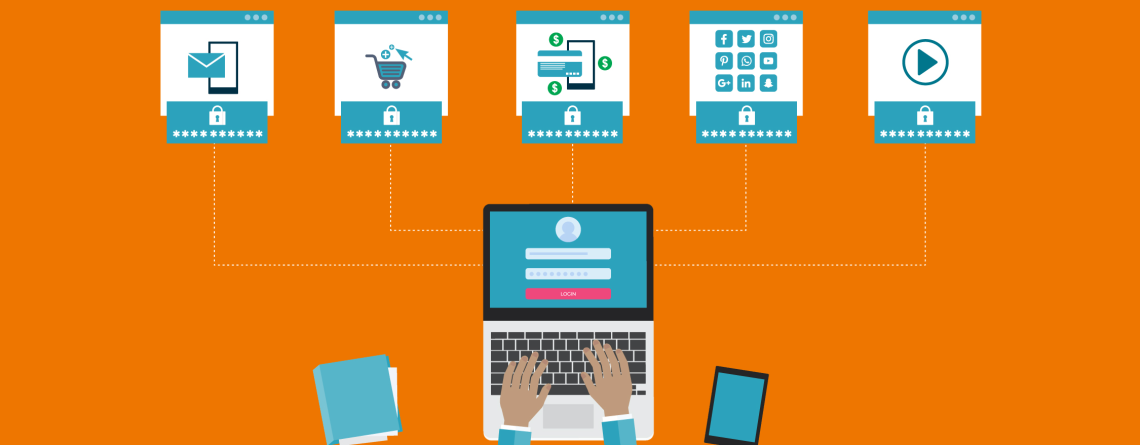
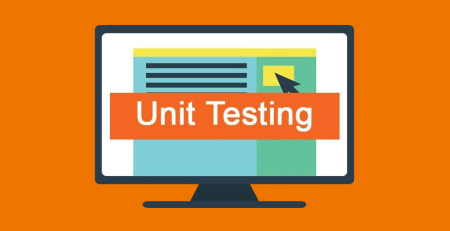
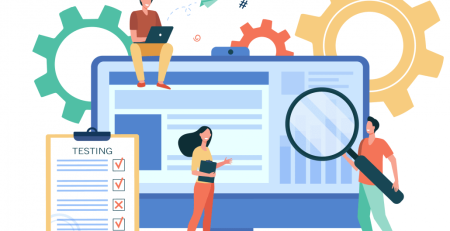
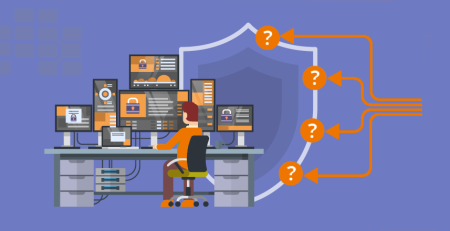
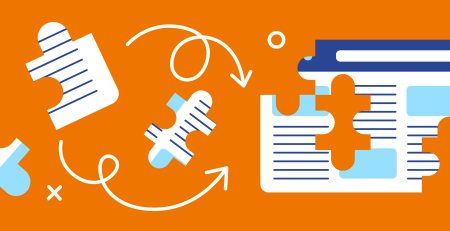
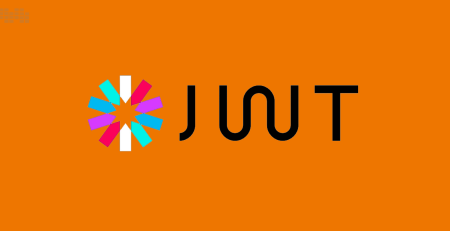
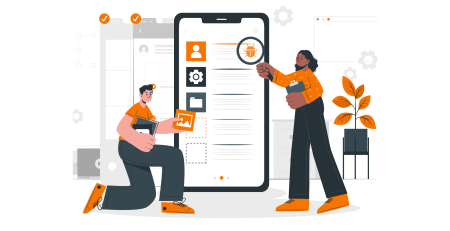
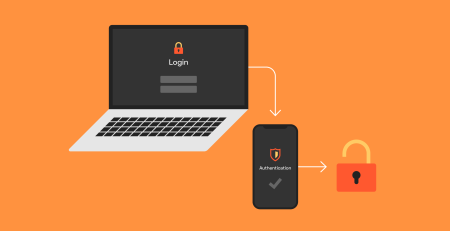
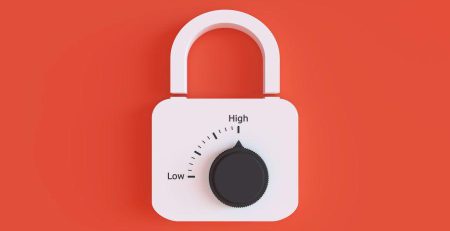
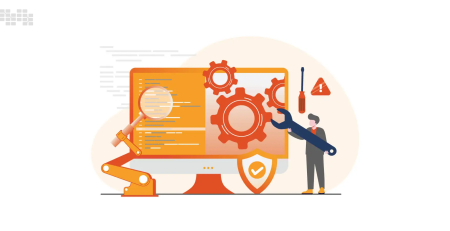
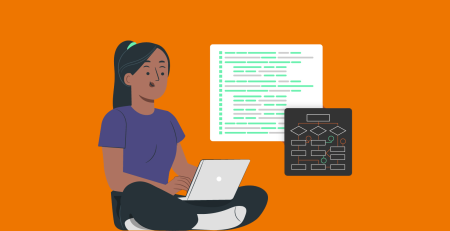
Leave a Reply